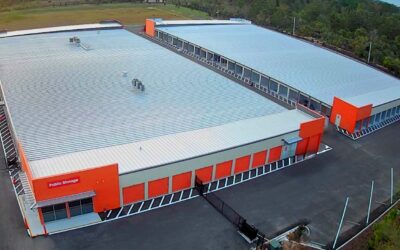Although new supply has tamped down rents, it isn’t deterring self-storage owners and operators from mining for new opportunities in the sector.
New deliveries continue to weigh on street rates, according to Yardi Matrix, producing a 2.5 percent year-over-year decline in street rates for standard 10×10 non-climate controlled space. Still, operators and investors with a disciplined approach are finding opportunities, which they expect will continue even if the country dips into a recession in the next couple of years.
“In terms of a long-term investment strategy, we feel very comfortable with self-storage,” said Matt Burk, CEO of Fairway America, “as it has demonstrated resistance to downturns. Like any investment in real estate, it comes down to whether you can withstand the market pressures. If you aren’t over-leveraged and you are in at the right basis then I love the asset class as an investment.”
Fairway America, a Portland-based diversified real estate investor, closed its first two transactions at the end of October using its new value-add self-storage fund. The fund, which has raised $12 million of its $100 million goal, bought a former Kmart building in Grand Rapids, Michigan, and a vacant industrial facility in St. Louis, both of which it will convert into self storage. Fairway still has a year to raise its remaining capital and three years to invest it.
“Industrywide, clearly, there is a lot of supply in the market putting pressure on rents and occupancy, therefore, it’s even more important that we pay very close attention to the underwriting metrics and site selection,” Burk said.
That said, Burk said Fairway America likes the opportunities it sees in secondary markets. The fund will be on the hunt for approximately 25 deals over the next three years. Besides big box conversions, Fairway America is looking at a few deals in which it would acquire recently completed facilities entering the lease-up phase.
Capital markets strong amid new supply
The country’s core markets have experienced less negative impacts from new supply than overheated secondary and tertiary markets, said Brian Somoza, managing director at the self-storage real estate brokerage team at JLL in Los Angeles.
“Self storage facilities in these core markets continue to maintain their occupancy levels; West Coast markets have remained strong in terms of occupancy and rental rates,” Somoza said.
Rates have dropped in about 85 percent of the top markets that Yardi Matrix follows compared to September 2018.
“The self-storage capital markets remain strong in the face of new supply,” he said. “While certain markets continue to experience downward pressure on rental rates, others have absorbed the new deliveries quicker than anticipated.”
REITs squeeze out growth despite headwinds
Some of the big REITs reported earnings growth for Q3 despite new supply issues. Extra Space Storage said it increased same-store revenue by 3.3% and same-store net operating income (NOI) by 2.1% in the third quarter compared to the same period in 2018. Same-store occupancy was flat but still at a healthy 93.8 percent.
Extra Space noted in its earning release: “Occupancy has remained near all-time highs and same-store revenue increased 3.3% in the quarter.”
Life Storage was very active in Q3, acquiring 22 properties including five stores in Baltimore and three in Seattle — two new strategic markets — while also divesting of 32 mature stores. During its earnings call, the REIT’s executives told analysts that it was “extremely focused on margin improvement to ensure NOI is growing faster than revenue given the pressure that supply is putting on street rates.”
CubeSmart’s net income dipped in Q3 but its adjusted FFO of $86.8 million was up from $80.7 million in the year-ago period. As of September, it had five joint-venture properties under development.
“We are encouraged by our third quarter performance in light of the continued impact from supply and the difficult year-over-year operating expense comparison,” said Christopher P. Marr, president and CEO, in a prepared statement. Same-store NOI at CubeSmart was flat while property operating expenses rose by 5.3 percent.
JLL’s Somoza said he expects new deliveries to slow in 2020; markets impacted by new supply should start to see recovery shortly thereafter, he said.
“Revenue management is extremely important in markets heavily impacted by new supply,” he said. “Longer lease up periods and lower rates should be expected until those markets absorb the new supply.”







